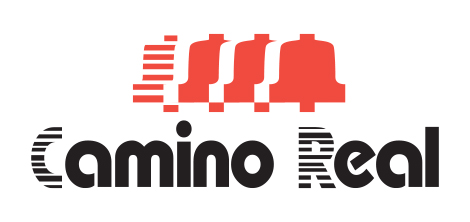Commercial Driver Industry Demands & Career Outlook in 2025
Truck and bus driving offers a rewarding career with real-world impact. Professionals in this industry keep commerce moving, connect communities, and play a vital role in the economy. At Camino Real Trucking School, students gain practical experience, develop essential safety skills, and build the confidence needed to excel on the road.
The commercial driver industry 2025 is experiencing significant growth across the United States, offering robust career opportunities for individuals pursuing careers in truck and bus driving. With a projected shortage of over 80,000 drivers, the demand for qualified professionals is at an all-time high. At Camino Real Trucking School, we provide comprehensive training for Class A and B Commercial Driver’s Licenses (CDLs), equipping students with the skills needed to thrive in this dynamic field.
Driver Demand & Shortage
The American Trucking Associations reports that the U.S. trucking industry is currently short over 80,000 drivers, with projections indicating a need for more than 1.2 million new drivers over the next decade to meet demand and replace retiring workers (ATA Driver Shortage Report).
Factors contributing to the shortage include:
- Aging Workforce: A significant portion of the current driver population is nearing retirement age.
- High Turnover Rates: The industry experiences a turnover rate of approximately 90% annually.
- Increased Freight Demand: E-commerce and global trade have escalated the need for transportation services.
Impact on New Drivers:
- Immediate Employment Opportunities: Graduates can expect job offers shortly after obtaining their CDL.
- Competitive Salaries: Starting wages are higher than many other entry-level positions.
- Job Stability: The ongoing shortage ensures long-term career prospects.
Workforce Diversity
Historically, the commercial driving industry has been predominantly male. However, efforts to diversify the workforce are yielding positive results:
- Female Representation: Women now comprise approximately 15% of the trucking workforce, up from previous years.
- Initiatives for Inclusion: Programs aimed at attracting underrepresented groups are expanding, offering mentorship and support.
These initiatives create a more inclusive environment and provide opportunities for a broader range of individuals to pursue careers in commercial driving.
Physical & Job Requirements
Commercial driving requires individuals to meet certain physical and mental standards:
- Physical Endurance: Drivers must handle long hours on the road and perform vehicle inspections.
- Mental Acuity: Remaining alert and making quick decisions is crucial for safety.
- Licensing Requirements: Obtaining a Class A or B CDL involves passing written and practical exams, including a road test.
At Camino Real Trucking School, we ensure that our training programs prepare students to meet these demands, emphasizing safety and operational excellence.
Technological Advancements
While our training focuses on traditional diesel-powered semi-trucks and buses, the industry is rapidly adopting new technologies:
- Fleet Management Systems: Many companies use GPS tracking and telematics to monitor vehicle performance and driver behavior.
- Safety Technologies: Features such as automatic braking and lane-keeping assist are becoming standard in modern vehicles.
Understanding these technologies can enhance a driver’s ability to operate efficiently and safely, even if they are not directly involved with electric or autonomous vehicles.
Regulatory Changes Impacting the Commercial Driver Industry
Staying up-to-date with federal regulations is essential for anyone pursuing a career in commercial driving. In 2025, several important rules govern CDL training, driver qualifications, and vehicle safety.
Entry-Level Driver Training (ELDT) Requirements
The FMCSA’s Entry-Level Driver Training (ELDT) regulations set federal minimum training standards for new drivers seeking a CDL or certain endorsements. These standards ensure that all entry-level drivers receive consistent, high-quality training before taking CDL knowledge or skills tests.
The FMCSA also maintains a Training Provider Registry where approved CDL training schools, including Camino Real Trucking School, are listed.
Medical Certification Standards
All commercial drivers must meet specific medical and physical requirements to ensure they can safely operate a commercial motor vehicle. Drivers must maintain a valid Medical Examiner’s Certificate as part of their CDL.
Detailed medical requirements can be found on the FMCSA Medical Requirements page.
Additional Regulatory Updates
Other 2025 updates affecting commercial drivers include:
- National Registry II (NRII): Starting June 23, 2025, medical examiners’ certification information will be electronically transmitted from the National Registry to State Driver Licensing Agencies (SDLAs), streamlining the process and enhancing accuracy.
- Paper Medical Examiner’s Certificate Waiver: FMCSA has modified a waiver allowing CDL and CLP holders to rely on a paper copy of the medical examiner’s certificate for up to 60 days after issuance (fmcsa.dot.gov).
By understanding and adhering to these regulations, drivers can stay compliant, safe, and competitive in the commercial driving workforce. At Camino Real Trucking School, our curriculum integrates these regulatory standards, ensuring graduates are fully prepared to meet industry requirements.
Career Opportunities
A CDL opens doors to various career paths:
- Class A CDL: Opportunities in long-haul trucking, regional freight, and specialized cargo.
- Class B CDL: Roles in local delivery, bus driving, and municipal services.
The Bureau of Labor Statistics projects a 4% growth in employment for heavy and tractor-trailer truck drivers from 2024 to 2034, aligning with the national average for all occupations.
Conclusion
The commercial driving industry in 2025 offers promising career opportunities for individuals seeking stable and rewarding employment. At Camino Real Trucking School, we are committed to providing top-tier training that meets industry standards and prepares our students for success.
Contact us today to learn more about our Class A and Class B CDL programs and take the first step toward a fulfilling career in commercial driving.
